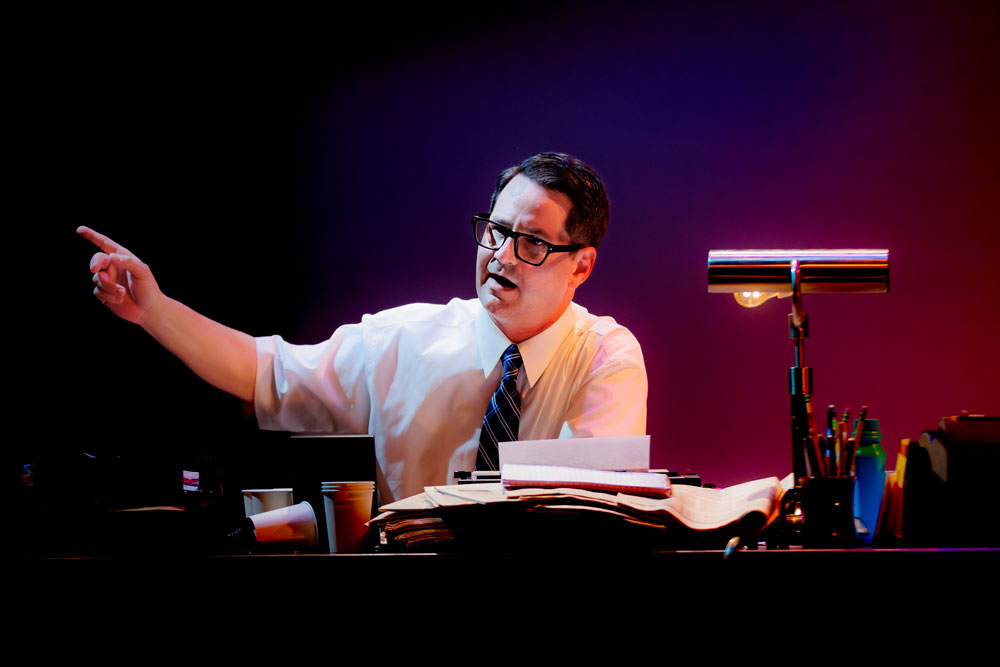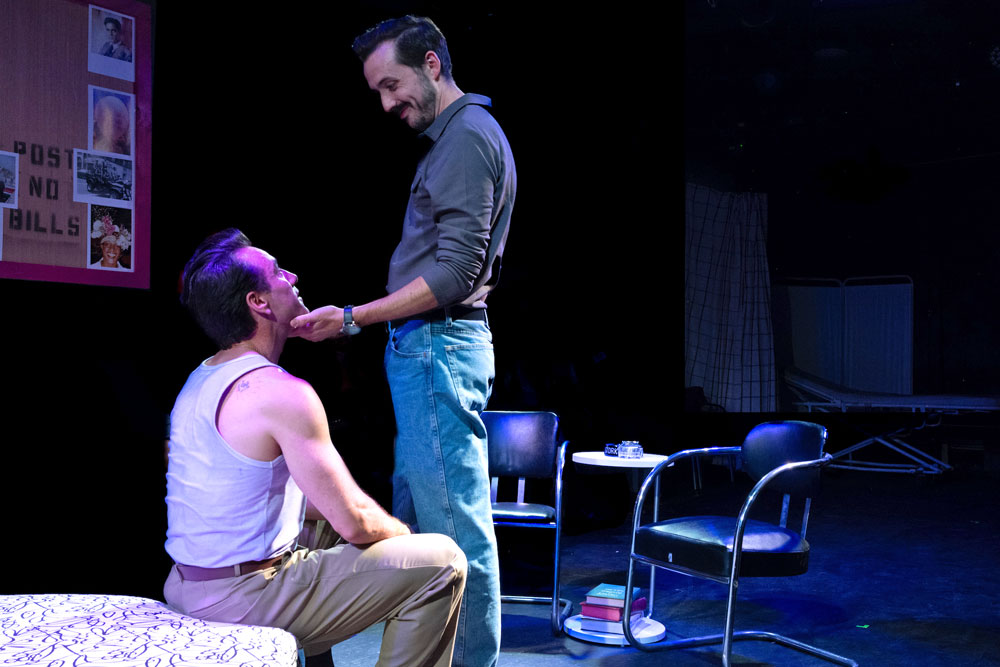Since its inception 30 years ago, Dance for Life has always been, at its heart, a response of joy. Conceived by a single dancer as part of a strategy to help members of the dance community during the HIV/AIDS crisis three decades ago, Dance for Life has become the embodiment of a community coming together to support its own. Bringing together an impressive range of dance disciplines and styles, the annual celebration salutes dance’s solidarity and reinforces the appreciation and importance of dance to Chicago arts enthusiasts.
Normally held on the venerable stage of the Auditorium Theatre, the 2021 iteration of Dance for Life moved to Millennium Park’s gleaming Pritzker Pavilion for its 30th anniversary performance. Dance audiences bring with them a different energy to performances than found in many other cultural venues. Their excitement and enthusiasm are conspicuous, palpable and pervasive. Invariably they act to heighten anticipation as they did on an ideal summer night last week.
Still very much enmeshed in the perils of a pandemic, Press on, regardless was the first of eleven dances presented Thursday night and was one of the few that seemed to take aim at how we’re coping with our present all-encompassing coronavirus challenge. Presented by Winifred Haun & Dancers, Press on, regardless was the only filmed dance of the evening. An excerpt of the original work, this sequence highlighted the capacity of dance to do the unexpected and make it brilliant. Using unorthodox dance positions and fanciful film optics; the dance, performed by Quint Lattimore and Summer Smith, could be thought a repudiation of despair and fear as told through the language of movement.
The prevalence of wonderful choreography and the impact of reworking established dances stood out as exciting hallmarks of Dance for Life 2021. With its high energy, slick sophistication and penchant for perfection, Giordano Dance Chicago’s Take a Gambol has been a crowd favorite since it premiered in 2018. Set to a blazing score of 60’s jazz classics, the dance has been modified to take in the company’s entire ensemble of 13 dancers. A big dance spinning on a big dynamic musical foundation, Take a Gambol 2.0 lets the company fill the stage with charisma and power.
Although no notice had been made that the Joffrey Ballet’s, The Times Are Racing, had been reworked; it certainly felt as if the concluding segment of the ballet had been extended or altered. The change might simply be one of perspective and having a different and better view of the dance. Still, some would argue that The Times Are Racing isn’t ballet. It certainly isn’t classical ballet where pointe shoes, tights and the traditional pas de deux reside. To the contrary, the dance is all about the present, youth and embracing the times as they are. Dan Deacon’s music, selections from his America album, is incomprehensibly beautiful. Combined with Justin Peck’s future focused choreography, you feel as if you’re witnessing dance with a mind. One that can’t be anticipated and is therefore always surprising. Dance company’s sometimes employ the expertise of stage designers to enhance the theatricality of a dance piece. The Times Are Racing was staged by Craig Hall, making it a masterpiece in mood and sentiment. A long work that gives itself time to unfold, blossom and settle into its narrative, it feels epic and ends as a love story. A dance that gives more every time you see it.
It’s also not unusual for costumes to assume a commanding role in a dance and two examples were especially noteworthy in the way they accentuated their programs during this year’s gala. Because they often reveal how accomplished they are in mastering a range of dance influences, Trinity Irish Dance Company never fails to delight. Push stays within their standard wheelhouse but does so with an edge. It starts lean, enlisting a solo male dancer to build a crescendo of virtuosity from a small flame. Kilt, as well as every other item of clothing, is black. One inch multi-colored bands travel up the dancer’s arm. Designed by Cathy Fitzmaurice, it’s a simple but striking effect, offsetting the somber with the vibrant, and in one gesture marries the past and present. The look is repeated as other members of the company joined Michael Fleck on stage, each displaying the unique artistry and footwork so characteristic of classic Irish dance enlivened here with something bordering on ecstasy.
Visceral Dance Chicago pivoted in a completely different direction in Synapse, a work commissioned for the company by the Harris Theater. Both male and female dancers wear the same single piece shimmering costume that are only vaguely gender neutral. Explicitly provocative with male dancers slyly brandishing wiles you’d associate with the opposite sex, it’s an amusing piece full of verve and insinuation. Originally choreographed to include dramatic hand held LED light cylinders, the absence of the lighting effects didn’t diminish the dance’s kinetic force.
A relatively new dance company, the South Chicago Dance Theater, performed one the more moving offerings of the evening. An excerpt from its Architect of a Dream, Kia Smith’s choreography set Martin Luther King’s I Have a Dream speech to movement. Poignant and emotionally expressive, it touched an empathetic cord among many in the audience who may have been reflecting on the past year’s race centered strife while watching the performance and listening to Dr. King’s call for change.
Temperament fluidity is always the name of the game during a Dance for Life performance. Both DanceWorks Chicago and Movement Revolution Dance Crew brought up the tempo and enlivened the spirit of the show with dance fueled by quite distinct types of music, jazz and Hip Hop. DanceWorks filled Mutter Matters with as much comedic mischief as it did technical skill; while Movement Revolution’s Dance Crew went for broke as they celebrated the kind of street culture dance art you might find in front of the Chicago Theater on a weekday summer afternoon.
As wonderful as much of the dance was, an equally rewarding component of the event was its attention to why this festival was being held. How the frustration of that one dancer, Keith Elliott, led to actions that culminated in Dance for Life, Chicago Dancers United and the Dancers’ Fund. From the Pritzker Pavilion’s jumbotron, people talked candidly about how Chicago Dance United’s financial arm, the Dancers’ Fund, has helped those professionally affiliated with dance pay their rent and doctors bill when they found themselves against the wall. Two of those people, both dancers, spoke about what it meant to have this resource come to their aid when they needed it. Other speakers paid tribute to Harriett Ross, the person who created the Dancers’ Fund and someone who gave of herself relentlessly from the 1990s to now actively promoting and helping to build the fund. Having earlier exceeded this year’s goal of $212,000, a new target was set at $250,000. It too has been surpassed.
Dedicated to Ross, the finale seemed to reach back to those days when that other epidemic stalked the land, ravishing far too many in the arts world; including dancers. House and disco hadn’t yet been displaced and the soundtrack in the clubs was brash and bold. A fixture in Chicago’s dance constellation, Randy Duncan choreographed As One and tapped Ira Antelis to provide the musical backdrop and theme. Explosive, insistent and fearless, dancers followed pulsing lyrics declaring it’s “Time to Act”, “Down with Hate” and calling for us all to unite as one. Representing each of the companies participating in this year’s festival, they moved to Duncan’s vision; calling to mind a style of dance rooted both in tradition and exploration.
Dance for Life
August 26, 2021
Jay Pritzker Pavilion
Millennium Park
Chicago, IL 60610

![PrideArts [title of show] Raining Gold](https://rowgseat1.com/wp-content/uploads/2024/09/a53939222075_ceaf585bae_k.jpg)
